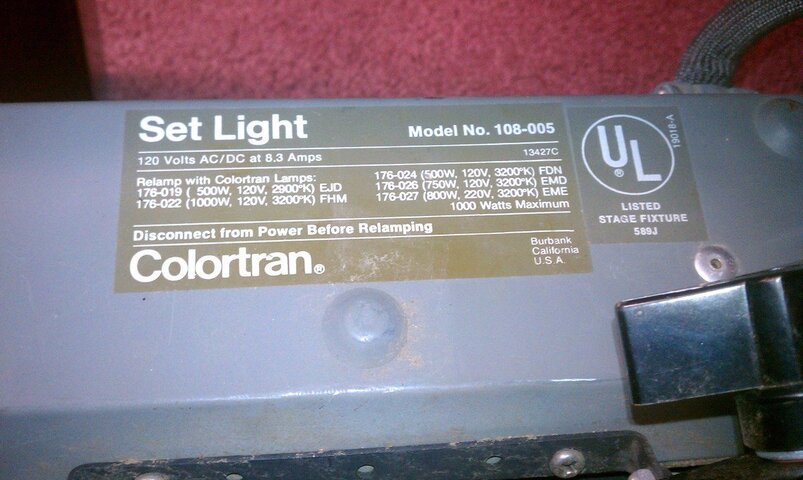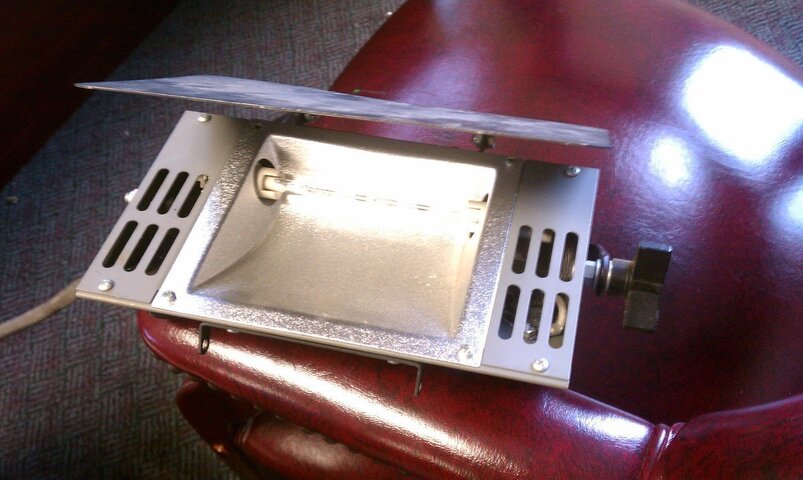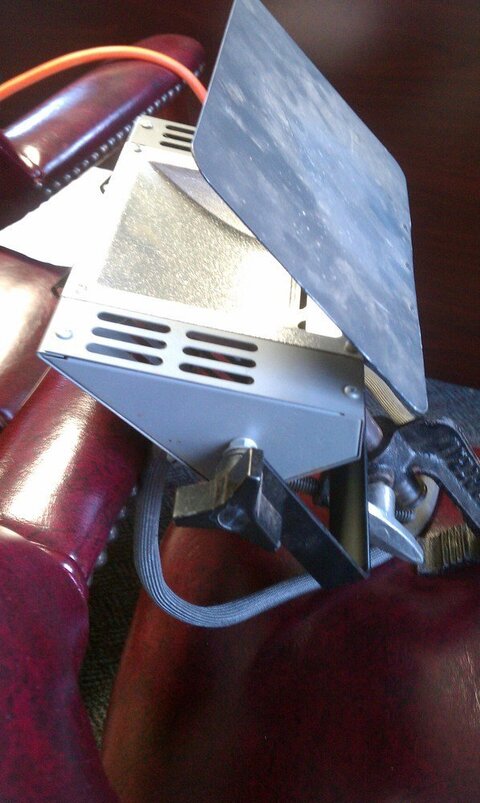Our church came across a couple
Colortran "Set Light" model No. 108-005. Googling it brings up nothing but bulbs. I am trying to figure out what a good application for it would be. A general
stage wash? It takes a
halogen lamp (basically a work light
bulb) and has a single
barn door. Any thoughts would be appreciated.
The
Colortran Set light is a very unique
instrument introduced in the mid 60s.
Colortran when they first started up, and before they were owned by a parade of larger companies, started out by making light weight lighting instruments for the film and TV industry. At the time, almost all Film lighting was Mole Richardson, (the huge dark red instruments, that appeared to be built with old battleship steel.) Most TV studios were using Century instruments. ( big old grey things that weighed about half of a Mole Richardson.) In the early 60s and for some time, newer and lighter cameras were being introduced in the film industry, and shortly thereafter
portable TV cameras were becoming
practical. In both industries the cameras were becoming more light sensitive. In a natural order of things as cameras became more sensitive and less heavy,
Colortran was one of the first to introduce lighter weight instruments for
portable use. They were
identified by their royal blue paint. At about the same time Lowell introduced competitive instruments, although a
bit more pricey. They were
identified by their yellow color. As
Colortran saw a very quick success in
portable light weight instruments, they expanded their
line to include several instruments that were both
portable and quasi-studio. Rather than compete with instruments that were already popular, they developed several new designs. They introduced the "
broad", a rectangular
scoop type
instrument, that lended itself to the shape of TV sets better than the conventioal
scoop. They also introduced the "Setlight" it is smaller than a
broad, and has a non-symetrical
reflector. The idea is that the
reflector will distribute the light brighter on one side of the projection than on the other. If hung correctly, and pointed at the set piece background behind a newscaster, the brighter side of the projection would light the lower part of the set piece. With the distance of the
instrument from the top to bottom, and the light falling off with distance, it was possible to illuminate the entire set piece with the same amount of light. It didn't do that quite as well as designed, but came pretty darn close.
So what you have, is a small rectangular
scoop type light or "
broad" with a
reflector that is designed to give even illumination on a wall located quite close, and behind talent. As for use in the
theatre, it was never meant to have
gel mounted on it, as TV cameras have a
white balance circuit and most TV uses white light. You probably could make some sort of
gel frame, but it would have to be mounted quite a
bit in front of the
instrument.
All that I have related above is from personal experience and not from the history books, so my
disclaimer is that maybe there is more to the history portion than I am aware of. I started in TV when I was 16 in 1957 and continued in that field until 1992.
Theatre was always a hobby until I retired from TV, and then
theatre became my profession.
Tom Johnson








